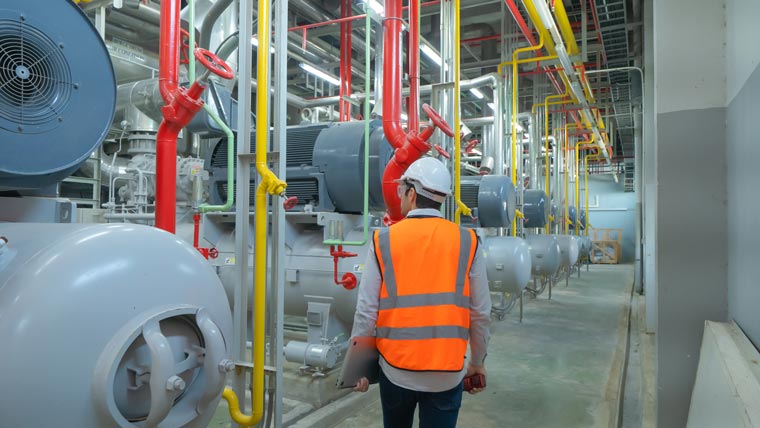Process Safety Management (PSM) programs have been around since the early 90s. Before then, there were few regulations, and it was like the “wild, wild west” in terms of safety programs and documentation requirements. This “wild, wild west” mentality inevitably led to catastrophic incidents, and as a response the requirement to implement PSM programs was put in place. The PSM program sets standards for facilities handling large quantities of hazardous chemicals such as ammonia. Since 1992, the Occupation Safety and Health Administration (OSHA) has released several interpretations and amendments that expanded PSM program requirements.
With more attention being paid to worker and public safety, it is likely that these updates will continue to happen. So, what does that mean for you? Essentially, any time OSHA updates interpretations or rules related to your industry, your facility must update its PSM program to follow suit. Likewise, a major component of a good PSM program is conducting regular reviews and audits intended to identify and correct hazards and program gaps. In other words, as long as there is ammonia in the pipes, your PSM program will never be finished; rather it will be a work in progress.
So why should I have a PSM program?
PSM is a way to make your facility safer for people onsite. OSHA’s PSM program requirements don’t directly deal with offsite consequences—that’s where the Environment Protection Agency (EPA) steps in—but safety starts with the source. Process Safety has been defined by AIChE’s Guideline for Auditing Process Safety Management Systems as “the protection of people and property from catastrophic incidents from unplanned or unintended deviations of failures.” If you worked next to a highly hazardous chemical all day, you would want to know there are measures in place to keep you going home to your friends and family every day. In addition to safety incentives, PSM leads to a plethora of business and financial incentives as well. A facility that takes the initiative to develop and maintain an effective PSM program can help lower insurance costs and intrigue investors. If all that isn’t enough, did I mention PSM is legally required for facilities containing quantities of hazardous substances above a certain threshold?
How can I avoid incidents and citations?
The best thing you can do to avoid incidents and citations is to have an effective PSM program. Regulators are participating in conferences, seminars, and training courses to help each facility understand the importance of the PSM program. The reality is that a lack of a PSM program, or a poor execution of a PSM program, will result in citations.
14 elements that make up a PSM program:
- Compliance Audits
- Training
- Contractors
- Hot Work
- Process Safety Information (PSI)
- Process Hazard Analysis (PHA)
- Mechanical Integrity
- Operating Procedures
- Incident Investigation
- Management of Change
- Employee Participation
- Trade Secrets
- Pre-startup Safety Review
- Emergency Planning and Response
Of the 14 elements that make up a PSM program, the same top four elements are almost always cited the most each year: Mechanical Integrity, Process Safety Information, Operating Procedures, and Process Hazard Analysis. While the order of the top four most cited elements may change, those elements somehow always are able to make it into the top four.
How exactly do I create a good PSM?
Let’s get a little more specific. Facilities not only need to identify potential hazards; they also need to have some way to address those hazards. When an incident occurs that stems from failure to identify hazards, the first thing to look for is a process hazard analysis that is complete and current. The PHA should identify the hazard, evaluate the hazard, and develop approaches to mitigate or eliminate the hazard.
Identifying the hazard is the first step, but what can be done do to mitigate or eliminate the hazard? There should be written procedures for maintenance activities and safe operation of the system. Only authorized people should have access to machinery rooms to perform these maintenance and operation activities. Machinery room safety systems are incredibly important for the safe operation of the facility and should not be neglected. Emergency shutdown switches and ventilation switches need to be present outside each machinery room door and should be tested at some frequency. Engineered safeties like atmospheric relief valves need to be maintained and replaced every five years. There needs to be documentation in the programs PSI section that shows these relief valves have a piping system that is adequately sized to prevent excessive backpressure of the relief valves.
Now that you have a few ways of identifying and mitigating hazards in place, what happens if the hazard is unavoidable? Plans need to be in place for emergency response to limit the potential exposure. Critical shutoff valves need to be accessible, and a schematic should be in place to show responders how to get to the valves. You should have a record of emergency response communication with the Local Emergency Planning Committee and local responders, so everyone knows what to do in the event of an emergency.
In short, an effective PSM program will help you to identify, understand, and control process hazards so that everyone at the facility can help prevent incidents and injuries.



